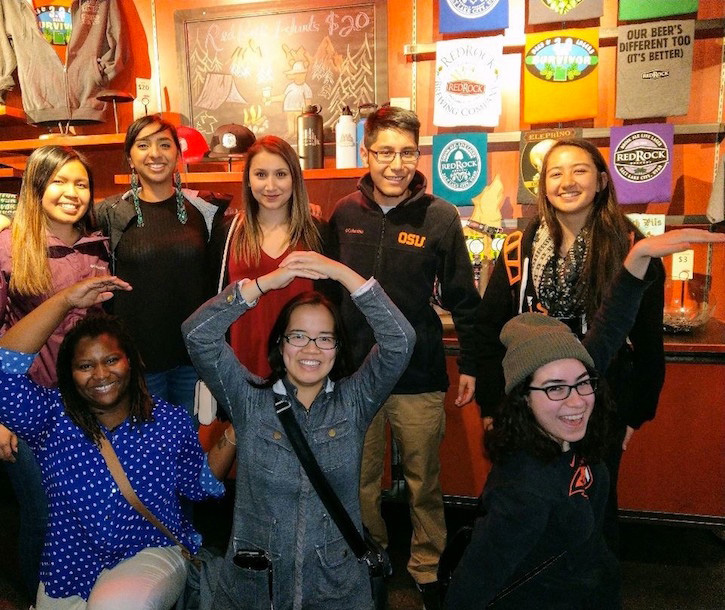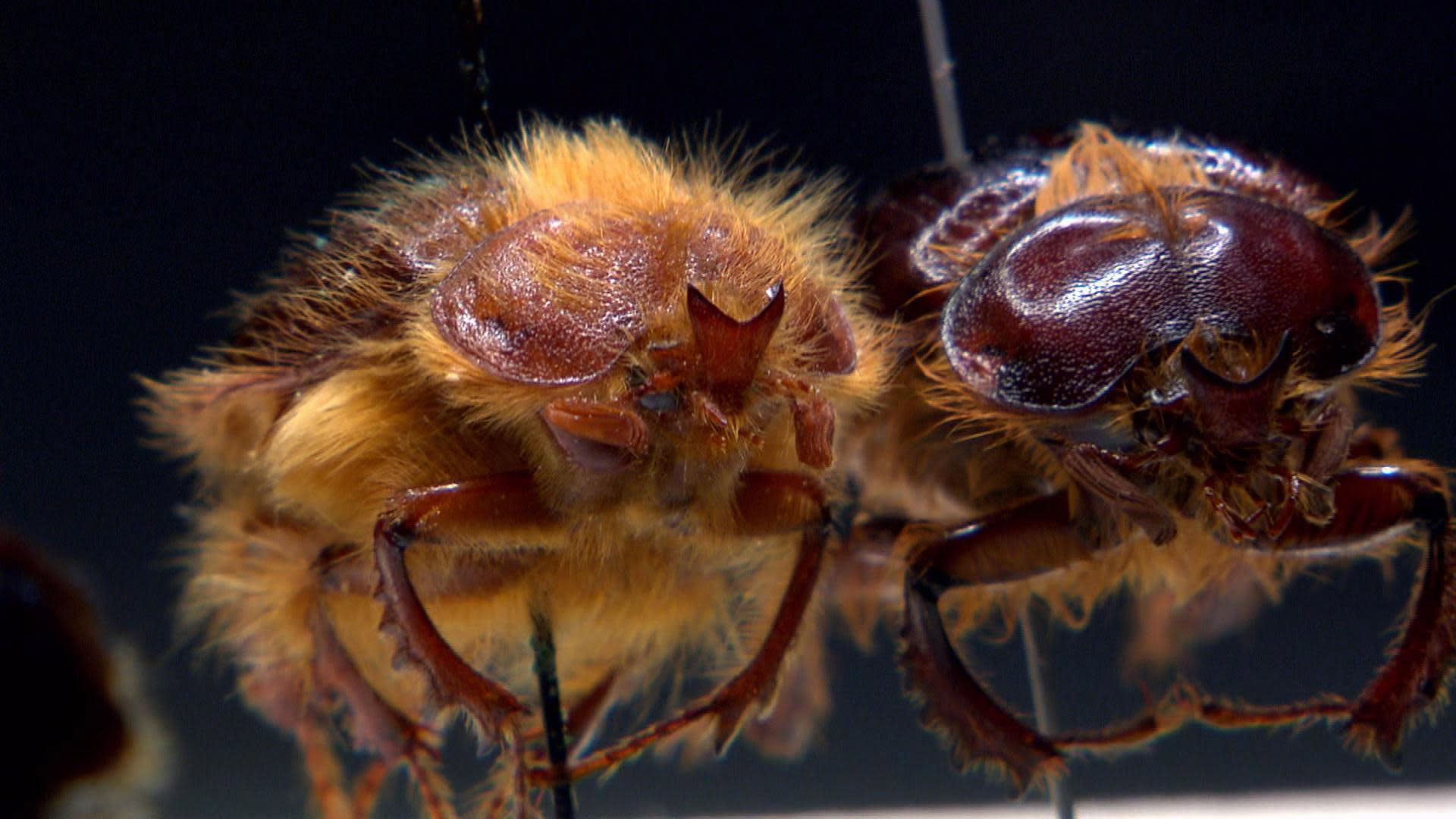
Words from the Dean
November 2017
With fall term more than half over, I want to give you an update. As you may recall from my August newsletter, my priorities this year are centered around solving our fiscal challenges through improving student success, growing Extended Campus revenue, operating within our budgets, balancing our workloads, and increasing central funding for the College by transitioning to the new university budget model.
This month, I would like to focus on student success—including recruitment and retention—and on Extended Campus.
With contributions across the College that are led by Associate Dean Staci Simonich, we are working to decrease DFW rates in high-enrollment, high-DFW courses. We are building on our success in some of these classes (i.e., chemistry, math, biology, physics). New for winter term, we are implementing an early intervention plan for at-risk students. We are increasing instructor use of Canvas so that students and advisors across campus can better track student progress in our classes. We are increasing recruitment efforts for transfer, underrepresented minority and high achieving students.
Some of these efforts have been ongoing for many terms, lowering DFW rates for example, while some are new. Improving student success is an “all hands on deck” challenge, and everyone needs to be involved. Many of you are already heroes by being excellent teachers and diligent advisors, by offering extra help sessions, by being a friendly voice to students when they come in to the departmental office, by entering your grades quickly, by talking to students who are struggling and by mentoring at-risk students in an experiential learning environment, such as a lab or internship. Let’s continue to create a student-success centered culture that increases retention, decreases DFW rates and decreases time to graduation.
We are expanding our Ecampus footprint. Physics is beginning work to create the nation’s best online introductory physics sequence, which will launch in September 2019. Chemistry and Integrative Biology are pioneering new ways of teaching labs online. If you haven’t seen the award-winning 3-D virtual microscope, check out this video demonstration and the awards that Ecampus has received for this. Andrew Bouwma in Integrative Biology was part of the collaboration involving more than 30 OSU faculty, department heads, Ecampus multimedia developers, designers and other staff. Chemistry is also going to offer chemistry for engineers online, new Bac Core offerings in the chemistry of color and forensic chemistry, and is investigating offering true semester-length Ecampus classes. Integrative Biology will put its Zoology degree fully online by fall 2019, the first undergraduate degree in the College of Science that can be completed entirely through Ecampus.
I am inspired by the research and innovation taking place in the College of Science. Davide Lazzati in physics predicted that short gamma-ray bursts could be detected more than a month before the kilonova explosion of two colliding neutron stars was observed. Francis Chan in Integrative Biology reported that the Oregon Coast is now facing annual threats from hypoxia, similar in regularity to our wildfire season. Discoveries like yours are the engine of science that moves our society forward – thank you.
RoyRoy Haggerty
Dean, College of Science
All the news that’s fit to print.
Please submit news, honors and awards, discoveries, events, research funding, student news, alumni updates and more. Just send us a quick email by the end of the month.

WElcome
Meet the class of 2021
This fall the College of Science welcomed 696 new students, a huge increase of 31 percent from last year’s incoming class. The majority of the incoming class of 2021—67%—identified as female, which constitutes the highest number of first-year women students in science since 2013. At 467, the total number of new women this year constitutes a 51.6 percent increase over fall 2016.
The College is thrilled to welcome the highest ever number of high achieving students in its incoming class: 37.6 percent! Twenty-five percent first-year students indicated they are first in their family to attend college and 23 percent are underrepresented minorities. More than half of first-year science students, or 570, receive scholarship support.
We look forward to teaching, inspiring and learning from this diverse group, the next generation of leaders in science.

RESEARCH EXCELLENCE
Research Funding
Read more of the most recent research happening in our College online.
Michael Kent has received a $30,787 grant from the University of Oregon to support his salary for the Michael Kent NIH Zebrafish International Resource Center.
Stephan Atkinson was awarded a $290,000 grant from the US—Binational Agricultural Research and Development Fund for his project “A Proteomics and Transcriptomics Study into Myxozoan Parasite Infection Mechanisms.”
Michael Blouin received a $331,526 grant from the Bonneville Power Admistration for his project “Evaluate the Relative Reproductive Success of Hatchery-Origin and Wild-Origin Steelhead Spawning Naturally in the Hood River.”
David Ji received $38,755 from the Department of Energy for his project “Hard-Soft Acid-Base Chemistry to Detain Polysulfides inside Li2S@Graphene Formed by Lithiothermic Reduction.”
Bo Sun was awarded $56,250 from the Gordon and Betty Moore Foundation for his project “Follow the Leader: Forecasting collective cancer dynamics.”
Research Highlights
David Lazzati, theoretical astrophysicist in the physics department, was part of a group of scientists who successfully predicted that short gamma-ray bursts associated with the gravitational emission of binary neutron star coalescence could be detected – whether or not the gamma-ray burst was pointing at Earth. The recently observed kilonova explosion of two colliding neutron stars that made news around the world confirmed the prediction.
Adrian Gombart, associate professor in biochemistry and biophysics, discovered that loading nanofiber sutures with vitamin D induces the production of an infection-fighting peptide. The discovery could represent an important advance in the prevention of surgical site infections, a multibillion-dollar challenge each year in the United States alone.
Mathematical biologist David Koslicki’s recent critical assessment of software tools used for metagenomics research represents a key step toward taming the “Wild West” nature of the burgeoning field.
Sarah Gravem, postdoctoral scholar in integrative biology, was the lead author on a study finding that research-funding agencies that require scientists to declare at the proposal stage how their projects will be “transformative” may actually be hindering discovery.
Francis Chan, marine ecologist and expert on ocean chemistry, reports that the Oregon Coast is now facing annual threats from hypoxia, or low oxygen, and scientists liken the phenomenon to the wildfire season the state faces every summer and fall.

Congratulations
National Honors
The 3D virtual microscope developed by College of Science and the Ecampus Course Development team won a second and third national award. The virtual microscope, part of an online biology series, won the WCET WOW Award, which recognizes institutions who apply innovative, technology-based solutions to a challenging educational need. It also won the Online Learning Consortium Effective Practice Award, which recognizes effective techniques, strategies and shared practices to advance quality and access to online programs.

Heidi Schellman
Heidi Schellman, Department of Physics head, was chosen as Chair of Commission 11 of the International Union for Pure and Applied Physics, an international organization formed in 1922 whose mission is “to assist in the worldwide development of physics, to foster international cooperation in physics, and to help in the application of physics toward solving problems of concern to humanity.”
Student Honors

Eight undergraduate and graduate students in biology, chemistry, biochemistry & biophysics, biochemistry and molecular biology, microbiology and BioHealth Sciences were delighted to attend the Society for Advancement of Chicanos/Hispanics and Native Americans in Science (SACNAS) national conference in Salt Lake City, Utah. Two of the students won national SACNAS travel scholarships to attend and the others were supported through generous alumni and friends.
It was an outstanding summer of research for at least 20 physics undergraduates who worked in labs at OSU and beyond, including Goldwater scholar and physics/mathematics student Gregory “Mirek” Brandt, who received a fellowship to study at the Weizmann Institute in Israel.
Science students were awarded more than $39.5 million in scholarships for the 2017-18 academic year, the second highest number of scholarships at OSU. Approximately 35 percent of this year’s first-year students are receiving scholarship support.

Visibility

On the right, the Goldendale specimen is much less hairy than the previously described Hood River specimens, leading Chris Marshall to think it could be a new species. (Photo: Nick Fisher/OPB)
Entomologist Chris Marshall was recently featured on Oregon Public Broadcasting – OPB for discovering new species of insects, including rare ice crawlers that live on glaciers in PNW mountains.
Who needs a tax cut? Not me, wrote emeritus professor of chemistry Ken Hedberg in the Corvallis Gazette-Times last week. Dr. Hedberg, who joined the College in 1956, explains that sometimes more “us” and less “me” makes the most sense when the future of our nation may depend on it.

Biochemistry & biophysics alumna Rebecca Pankow (’11) was featured recently in the New Yorker for programming robots that can perceive and manipulate objects in their environment. She helped program “Winnie,” a robot in The Humans to Robots Laboratory at Brown University, where she is a first-year Ph.D. student in computer science.

College News
More YInMn Blue News! Chemist Mas Subramanian’s YInMn blue pigment is now available to artists as a new blue acrylic paint called “Oregon Blue,” manufactured by the Australian paint supply Derivan. The Shepherd Color Company recently received EPA approval to manufacture a heat-resistant YInMn pigmented paint for commercial sale.
The College of Science will follow the university’s recommendation regarding new admission requirements for transfer students. Students with a 2.5 GPA or above on transfer credits will now be admitted without the math requirement but will need to take it within their first 45 OSU credit hours as required by our Academic Regulations. Current admission criteria of 2.25 GPA (plus math, plus writing, etc.) will remain true for all students who are below a 2.5 GPA. The Office of Admissions will be more intentional in integrating the use of the insight resume to do holistic reviews of applicants to ensure their potential for success.
Associate Dean for Research Doug Keszler is on sabbatical this year. In his absence, his duties are being divided among Dean Roy Haggerty, Executive Associate Dean Matt Andrews and Associate Dean Staci Simonich. Doug will continue to manage a limited scope of tasks while on sabbatical.
Bettye Maddux will be out of the office (and traveling) from November 19-28 and unavailable to authorize grant proposals. Please adjust your workflow accordingly.
Next year, the College of Science is offering new scholarships, 40 awards of $1,500 each, to two groups: 1) incoming students who have a financial need, are diverse or are a first-generation college student with a 3.5 GPA or higher; and 2) transfer students who are in our Degree Partnership Program, are diverse or are a first-generation college student with a 2.8 GPA or higher. The scholarships will be funded from philanthropic gifts by our generous donors.
Opportunities
Want to mentor an undergraduate? URSA (Undergraduate Research, Scholarship and the Arts) Engage supports undergraduates early in their program at OSU to pursue research or a creative activity under the guidance of an OSU mentor. Faculty mentors receive $250 in development funds. Take the first step and complete the Mentor Summary Form by November 6.
OSU is celebrating its 150th anniversary all year long! Stay on top of upcoming events, including the much-anticipated Oregon Historical Society exhibit “Oregon State University: A Legacy of Transformation” (February 9 – September 9, 2018) at the OSU150 website.
TRIVIA, but not trivial
The Department of Microbiology was founded in 1899, originating as a single course in bacteriology.

Events
Upcoming events
November 15
“Superbugs & Antibiotic Resistance: An International Conversation” at The Arts Center, Corvallis will feature scientist Michael Baym of Harvard Medical School, Oregon artist Bets Cole and OSU musicologist and composer Dana Reason. Learn more about how last year’s SPARK catalyzed a fascinating interplay between science and art and a giant petri dish.
November 17-18
College of Science Board of Advisors Fall Meeting
November 17
2017 College of Science Alumni Awards Dinner for winners and invited guests, Memorial Union, Horizon Room
April 20, 2018
Laura Greene, President of the American Physical Society and Director of the National Magnetic Field Laboratory will present the annual Yunker Lecture. Time and place TBD.
Recent Events
November 3
The College partnered with the Career Development Center’s Claire Wu to set up a special tour of the National Energy Technology Laboratory’s Albany facility from noon – 4 pm for our students. NETL-Albany is internationally recognized for its leadership in designing, developing and deploying advanced materials used in energy applications and extreme service environments.
October 31-November 1
The College co-hosted the Discovery Days, one of OSU’s most popular outreach programs for elementary school students, held twice annually, that immerses them in the rich and diverse world of science.
October 28, 2017
Eleven science students attended the inaugural Advanced Career Bootcamp to sharpen their professional skills and hone their job search strategy.
October 27-29
The Department of Mathematics hosted the first Biennial Meeting of the Society for Industrial and Applied Mathematics Pacific Northwest Section (SIAMPNWS), which attracted more than 145 mathematicians. The program featured four plenary presentations, over 70 talks in 11 thematic sessions and more than 25 posters by students.
October 5
The 2017 Fall Faculty and Staff Awards annual event celebrated research, teaching and administrative excellence with a reception and ceremony. Hearty congratulations to the award-winning faculty and staff in physics, biochemistry & biophysics, biology, microbiology, mathematics, ASBC and the marketing team!
